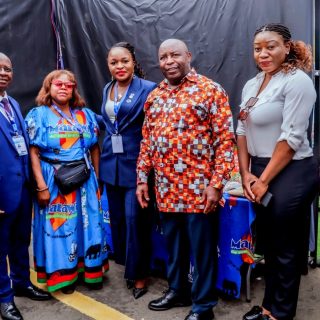
- +265 (0) 999 970 950 / 951
- mccci@mccci.com






The latest MacBook Air features a stunning Retina display with True Tone technology, Touch ID, the latest Apple-designed keyboard, and a Force Touch trackpad - all housed in a thin and light iconic wedge design made from 100 percent recycled aluminum.² And with 12-hour battery life, it's a do-it-all notebook that goes all day long.




With a resolution of 2560-by-1600 for over 4 million pixels, the results are positively jaw dropping.

An eighth-generation Intel Core i5 processor helps you power through daily activities.

With up to 12 hours of battery life, MacBook Air is your day‑in, day‑out dynamo.


Google Home Mini is powered by the Google Assistant, so you can ask it questions and tell it to do things. Just start with "Ok Google" to get answers from Google, tackle your day, enjoy your entertainment, and control your smart home. And when you ask for help, it can tell your voice from others for a more personalized experience.



Stream video content to any TV that has Chromecast plugged in, then play, pause, or turn up the volume.

Hear your daily briefing: weather, calendar, commute, reminders and news.

Play music from popular music services by artist, song, genre, album, playlist, mood or activity.


Malawi’s trade balance is structurally in deficit. Malawi's trade remains heavily dependent on agriculture, and its exports and imports reflect this reliance on primary and intermediate goods: tobacco accounts for more than half of total exports, as the country is one of the world's largest producers of tobacco. Other major exports include tea, sugar, and agricultural products in general. Imports are led by refined petroleum (7.2% of total imports), machinery, transport equipment, fertilizers, spare parts and medicaments.
The exchange rate of the kwacha undergoes fixed periodical adjustments, but since 1994 the exchange rate has floated. In 2005, administrative measures were put in place to peg the exchange rate with other currencies. Banknotes are issued by the Reserve Bank of Malawi.
Malawi central bank implemented a significant policy adjustment on February 1st, 2024, raising the policy rate by 200 basis points from 24 percent to 26 percent. This measure aims to address the persistent inflationary pressures, which have surpassed the targeted range of five percent. The central bank however kept Lombard rate at 20 basis points above the policy rate and the Liquidity Reserve Requirement (LRR) ratio at 7.75 percent for domestic currency deposits and 3.75 percent for foreign currency deposits.
The unemployment rate in Malawi decreased to 5.60 percent in 2022 from 5.70 percent in 2021. The unemployment rate in Malawi averaged 4.99 percent from 1991 until 2022, reaching an all-time high of 5.70 percent in 2020 and a record low of 4.80 percent in 1991. The top three sectors that employ more people are agriculture, forestry, and fishing, construction and transportation and storage according to NSO 2018.
The economy of Malawi is heavily dependent on agriculture, which employs over 64% of the population, and it is vulnerable to external shocks, particularly climatic shocks. Agriculture accounted for about one-third of GDP and about 80% of export revenue.
Adding {{itemName}} to cart
Added {{itemName}} to cart